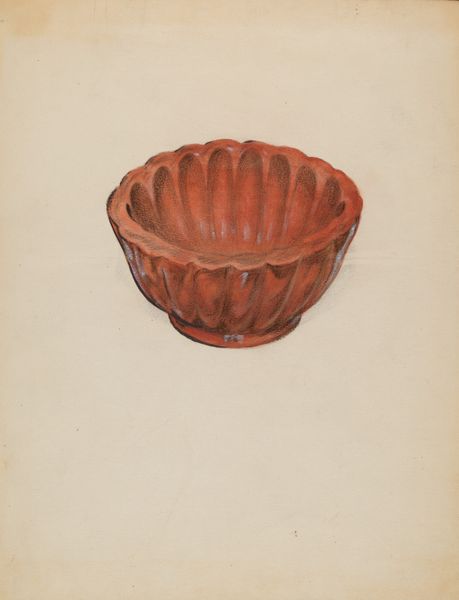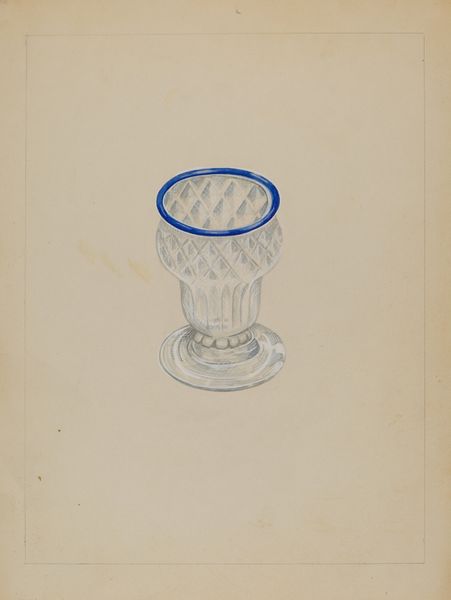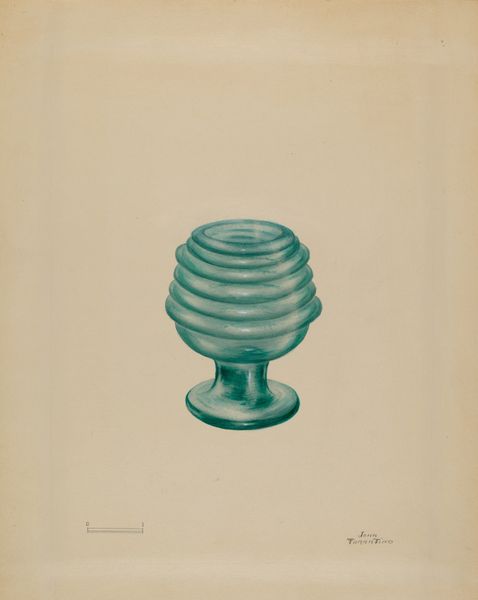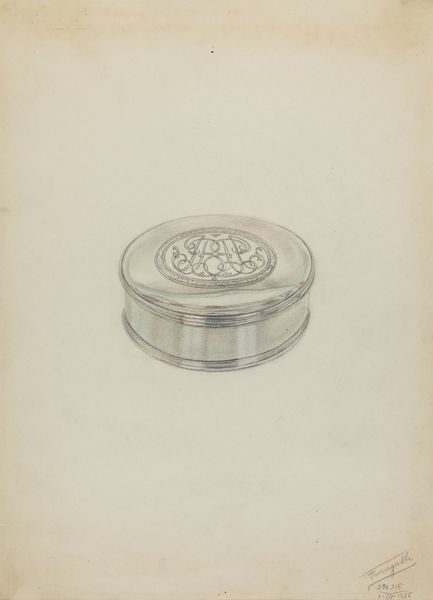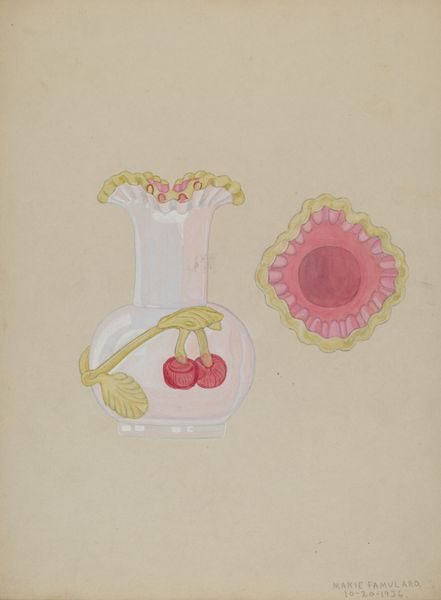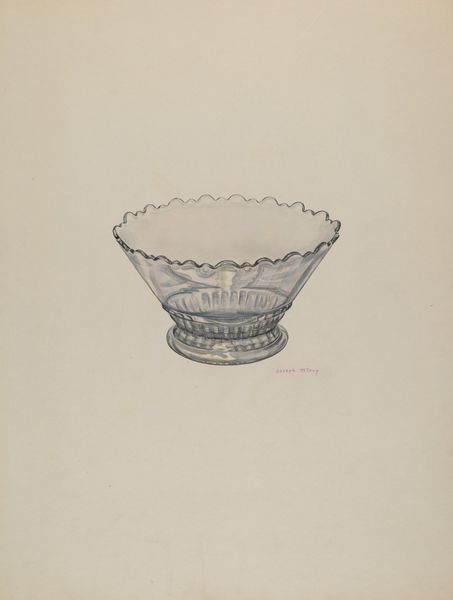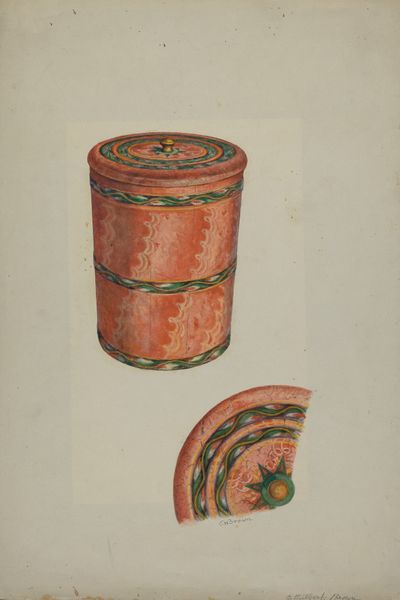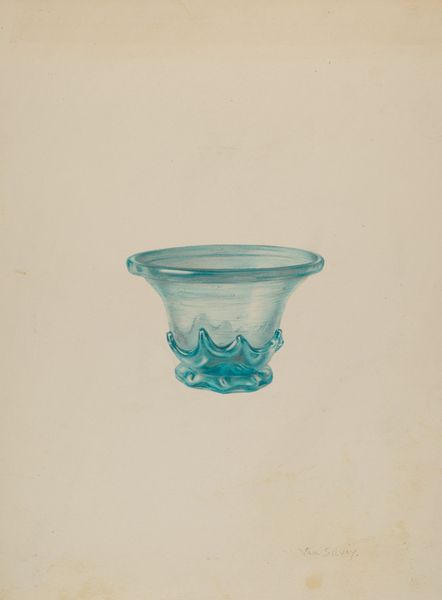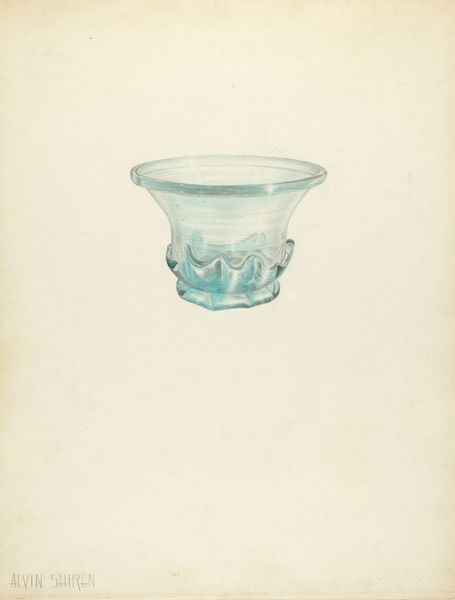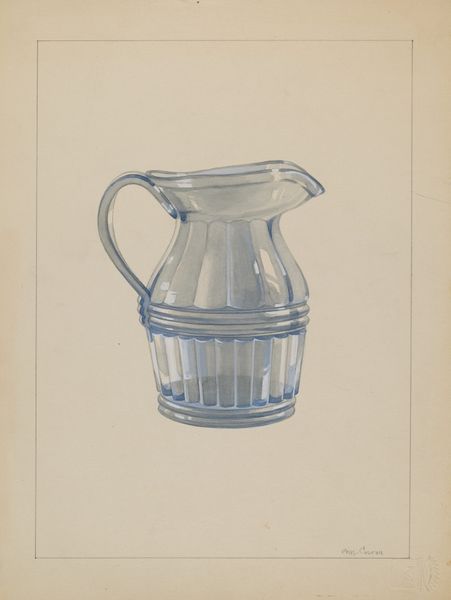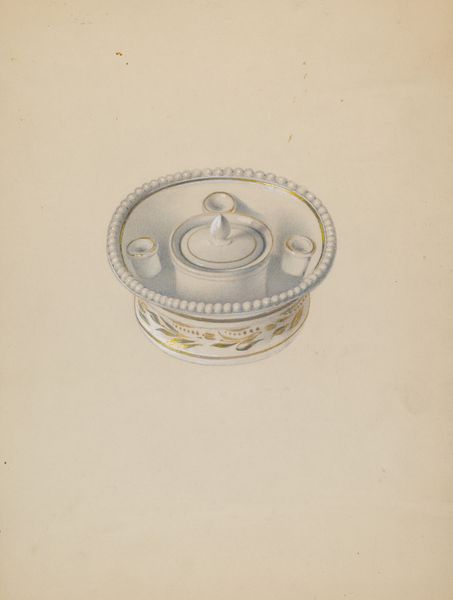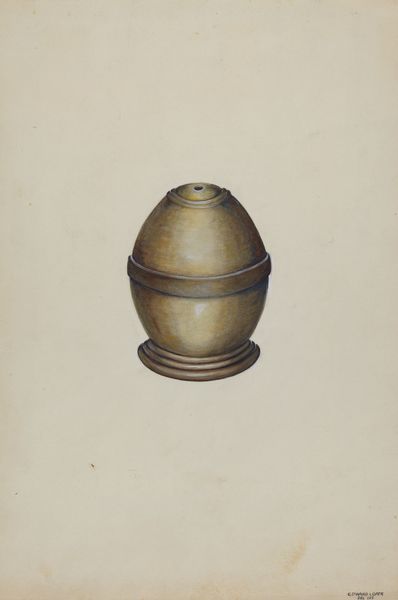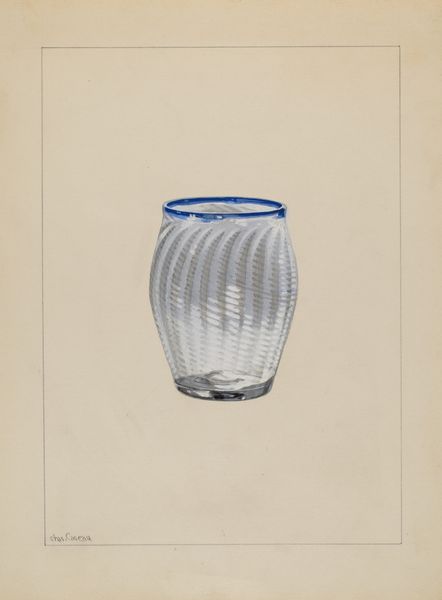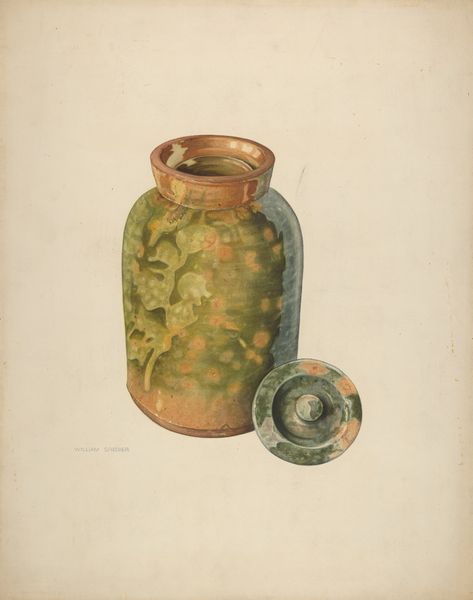
drawing, watercolor
#
drawing
#
water colours
#
watercolor
#
watercolor
Dimensions: overall: 51 x 38 cm (20 1/16 x 14 15/16 in.) Original IAD Object: 4 7/8" Wide 6 3/4" Long 4 1/8" Deep
Copyright: National Gallery of Art: CC0 1.0
Editor: Here we have "Pottery Molds," a watercolor drawing created by Joseph Shapiro sometime between 1935 and 1942. I find the contrasting colors and the everyday subject matter quite interesting. What do you see in this piece, focusing on its artistic merit? Curator: From a formalist perspective, I’m struck by Shapiro's attention to the visual structure and the play of light. Notice how the watercolor technique allows for a translucent quality, particularly in the upper mold, revealing a subtle interiority. The negative space, that pale background, is also doing some work to separate the two objects. What compositional choices stand out to you? Editor: I’m drawn to the sharp contrast in color between the cool, muted tones of the top mold and the warm, saturated yellow of the bottom one. It creates a clear visual hierarchy, doesn't it? Curator: Indeed. And consider the geometry inherent in the fluted designs of each mold. Shapiro meticulously renders these repeating vertical lines, setting up a dialogue between volume and surface. Do you find any symbolism in these forms? Editor: I suppose they could represent the everyday, domestic sphere, elevated through the act of artistic representation. However, to me the artist simply relishes these shapes in both their simple geometric forms, and in how light strikes them. Curator: I concur with you about its visual treatment as primary over its symbolic reference. Ultimately, “Pottery Molds” exemplifies how careful observation and formal considerations can transform mundane objects into compelling subjects for art. This piece is a fine study in watercolor. Editor: Thank you; it has definitely shifted my perception of this seemingly simple image. The formal qualities become so much richer under scrutiny.
Comments
No comments
Be the first to comment and join the conversation on the ultimate creative platform.
